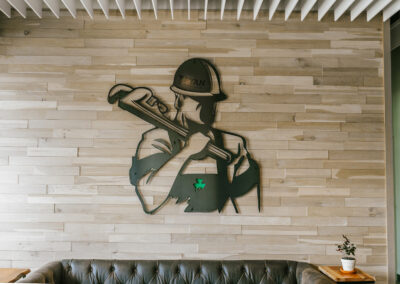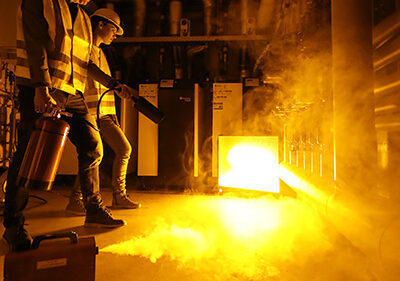Wet vs. Dry Sprinkler Systems – What’s the Difference?
When designing or installing a fire sprinkler system, one of the first decisions to make is the type of system to use. While NFPA 13, the Standard for the Installation of Sprinkler Systems, outlines various types—such as wet, dry, preaction, and deluge—wet and dry systems are the two most commonly used. These systems are essential for delivering water to suppress fires, but they function in distinct ways and are suited for different environments.
Understanding the differences between wet and dry sprinkler systems helps you evaluate which best fits your space. Whether you’re outfitting a commercial building, upgrading a facility, or installing a residential system, choosing the wrong type can result in costly mistakes.
Overview of Fire Sprinkler Systems
Fire sprinkler systems are designed to protect lives and property by controlling or extinguishing fires. Several sprinkler system types exist, including pre-action and deluge, but wet and dry systems remain the most widely used for their versatility. This blog explains the differences between these two systems.
What is a Wet Sprinkler System
A wet sprinkler system is the simplest type. The pipes are filled with water, and when heat from a fire activates the sprinklers, water is released immediately.
- Advantages:
- Fast response time.
- Simple design and low maintenance requirements.
- More affordable compared to other systems.
- Common Applications:
- Wet systems are ideal for heated spaces such as offices, schools, hospitals, and retail stores where freezing temperatures are not a concern.
What is a Dry Sprinkler System
A dry sprinkler system stores pressurized air or nitrogen in the pipes. Water is held back in a separate valve until the system activates. When sprinklers open, the air escapes, allowing water to flow.
- Advantages:
- Prevents water in the pipes from freezing in cold environments.
- Reduces the risk of water damage from accidental leaks or pipe bursts.
- Common Applications:
- Dry systems are commonly used in unheated spaces such as warehouses, parking garages, and outdoor areas.
Key Differences Between Wet and Dry Sprinkler Systems
- Operation:
- Wet Systems: Pipes are constantly filled with water. When heat activates a sprinkler head, water is immediately discharged onto the fire.
- Dry Systems: Pipes are filled with pressurized air or nitrogen. When a sprinkler head opens, the air escapes, allowing water to flow from the main valve to the sprinkler heads.
- Response Time:
- Wet systems respond instantly because water is already in the pipes.
- Dry systems have a slight delay as the air must first be released before water reaches the sprinkler heads. This delay is typically a few seconds but can make a difference in certain situations.
- Cost and Maintenance:
- Wet systems are less expensive to install due to their straightforward design and fewer components.
- Dry systems require additional equipment, such as air compressors and specialized valves, which increases the initial cost.
- Water Damage Risk:
- Wet systems carry a higher risk of accidental water damage from leaks or pipe failures, particularly in older systems.
- Dry systems minimize water in the pipes, reducing the likelihood of damage in case of leaks, but they may still discharge water during activation.
Choosing the right fire sprinkler system requires aligning it with your building’s environment and use. Wet systems work best in heated spaces, while dry systems perform better in cold areas like unheated warehouses or outdoor spaces. The building’s function also plays a role—wet systems suit offices and schools, while parking garages and storage facilities often need dry systems to prevent freezing. Wet systems offer affordability and easy maintenance, while dry systems demand complex installation and regular checks. Selecting the wrong system can lead to costly mistakes, such as retrofits or failures during a fire. For example, wet systems in cold settings risk frozen pipes, and dry systems in heated areas can lead to unnecessary expenses. Understanding these factors ensures you select the right system for your needs.
Need More Information?
Wet and dry sprinkler systems both provide effective fire protection when matched to the right environments. Your building’s conditions, usage, and budget determine the best choice.
Contact our team for help with selecting, designing, or installing a fire sprinkler system.

